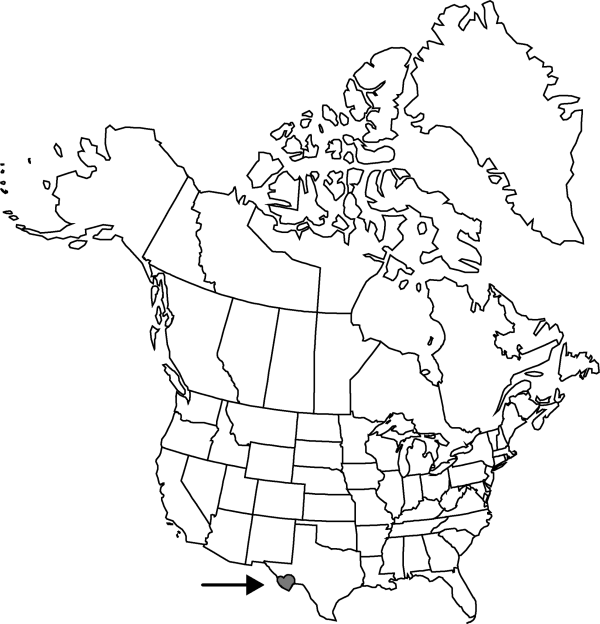Thelocactus bicolor
Bull. Torrey Bot. Clu b 49: 251. 1922.
Stems 3–38 × (2–)4–10(–18) cm; ribs 8–13 (plant often reaching sexual maturity while still entirely tuberculate); areoles spaced 6–20 mm apart along ribs. Spines (8–)12–30 per areole; radial spines (8–)12–20(–27) per areole, straw colored or white, contrasting with all other spines, 9–35(–45) × 0.3–1 mm, adaxial 1–3+ spines of areole strongly flattened, bladelike or ribbonlike, to 4 times wider than thick, 16–75(–100) mm (usually absent from sexually immature plants); central spines (9–)13–42(–58) × (0.2–)0.4–1.5 mm. Flowers: inner tepals rose-pink to magenta, marked with scarlet or orange proximally, sometimes with white band or margins near bases; stigma lobes reddish to red-orange or pale reddish brown or yellowish. Seeds finely papillate with strongly convex testa cells. 2n = 22.
Distribution

Tex., Mexico.
Discussion
Varieties ca. 4 (2 in the flora).
Thelocactus bicolor varies geographically, and an indefinite number of segregate taxa may deserve recognition in Mexico.
Selected References
None.
Key
| 1 | Areoles and spines larger; spines red and white, (older spines weather to ashy white), yellow color-form absent; widespread in s Texas and Big Bend region | Thelocactus bicolor var. bicolor |
| 1 | Areoles and spines smaller; spines usually yellow (rarely red, 0-5% in all populations); only in Marathon Basin of n Brewster County, Texas | Thelocactus bicolor var. flavidispinus |